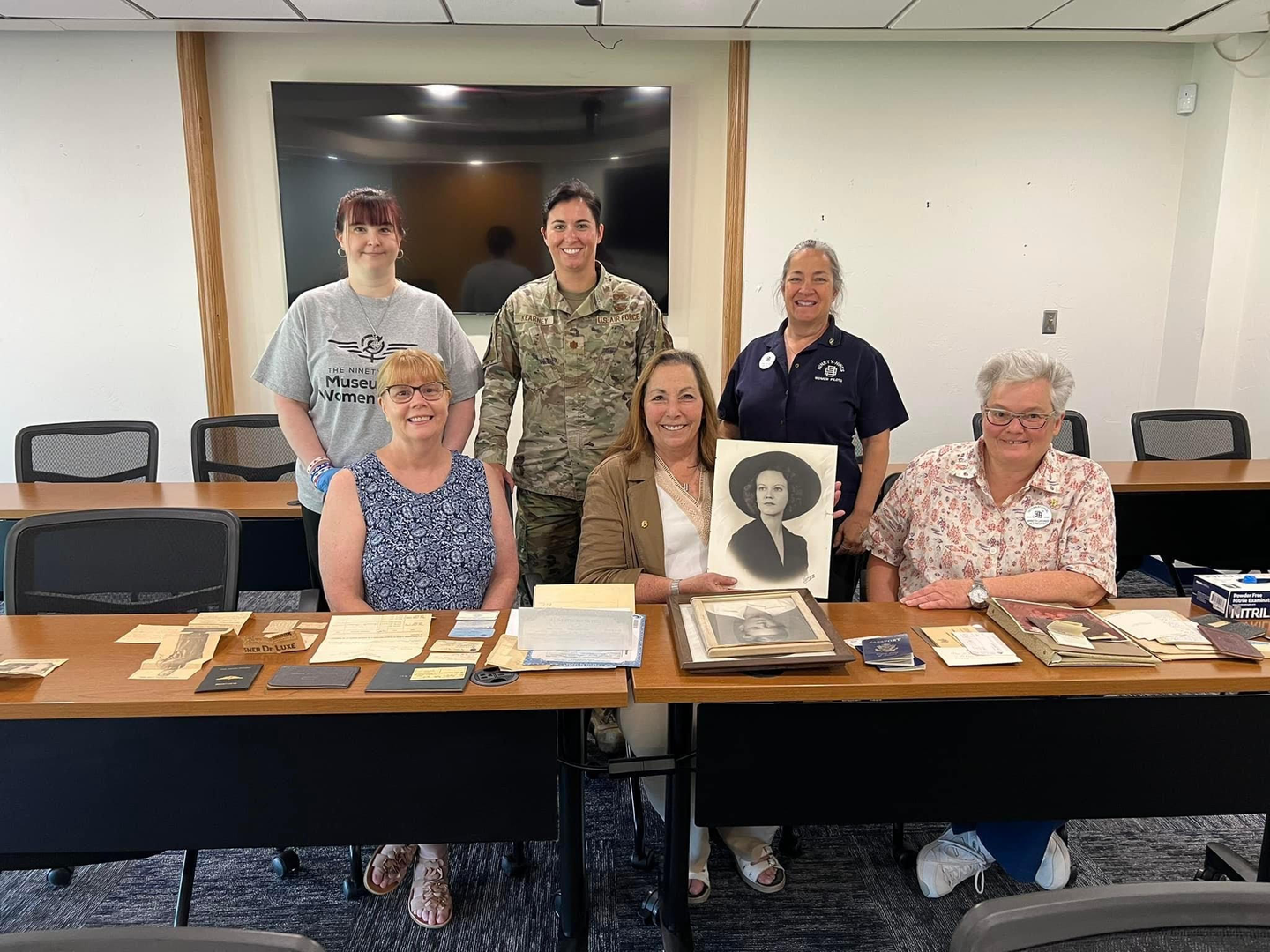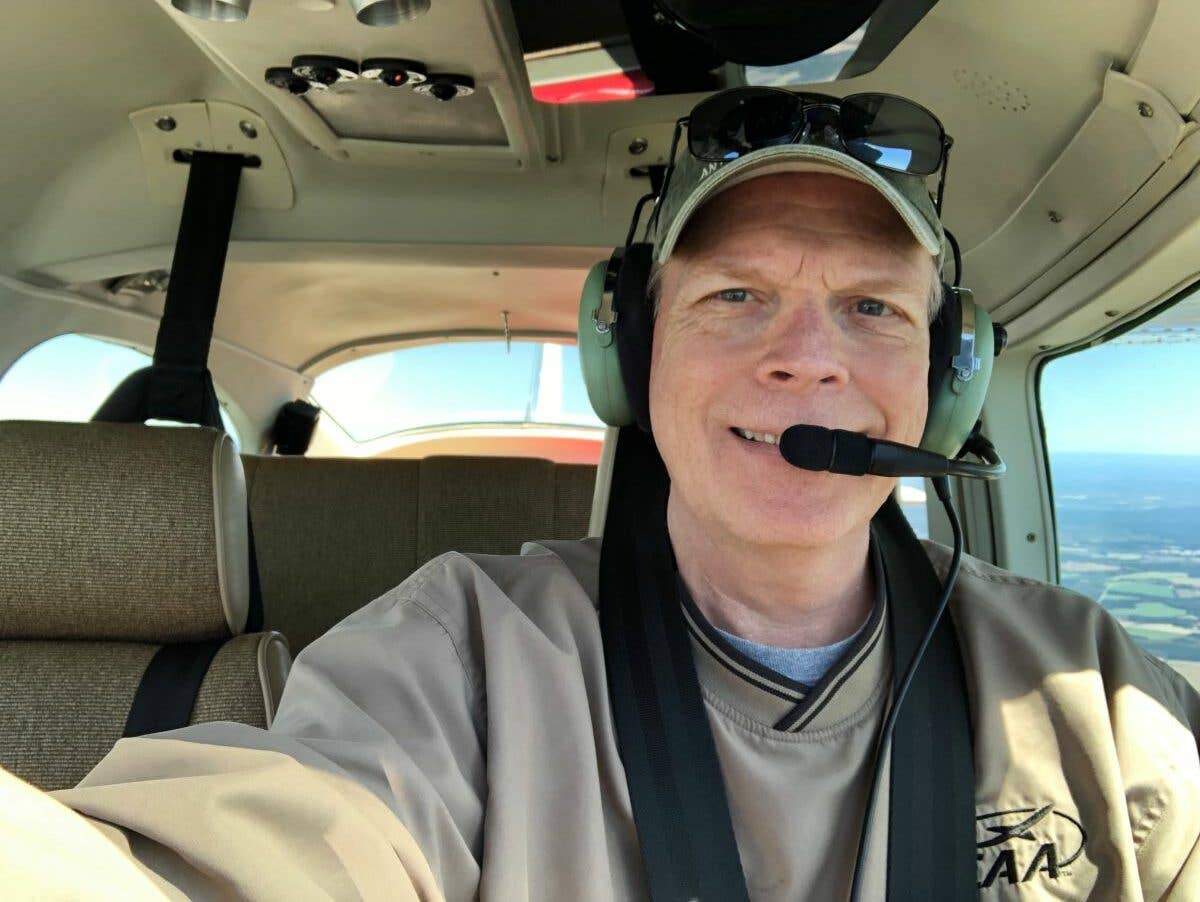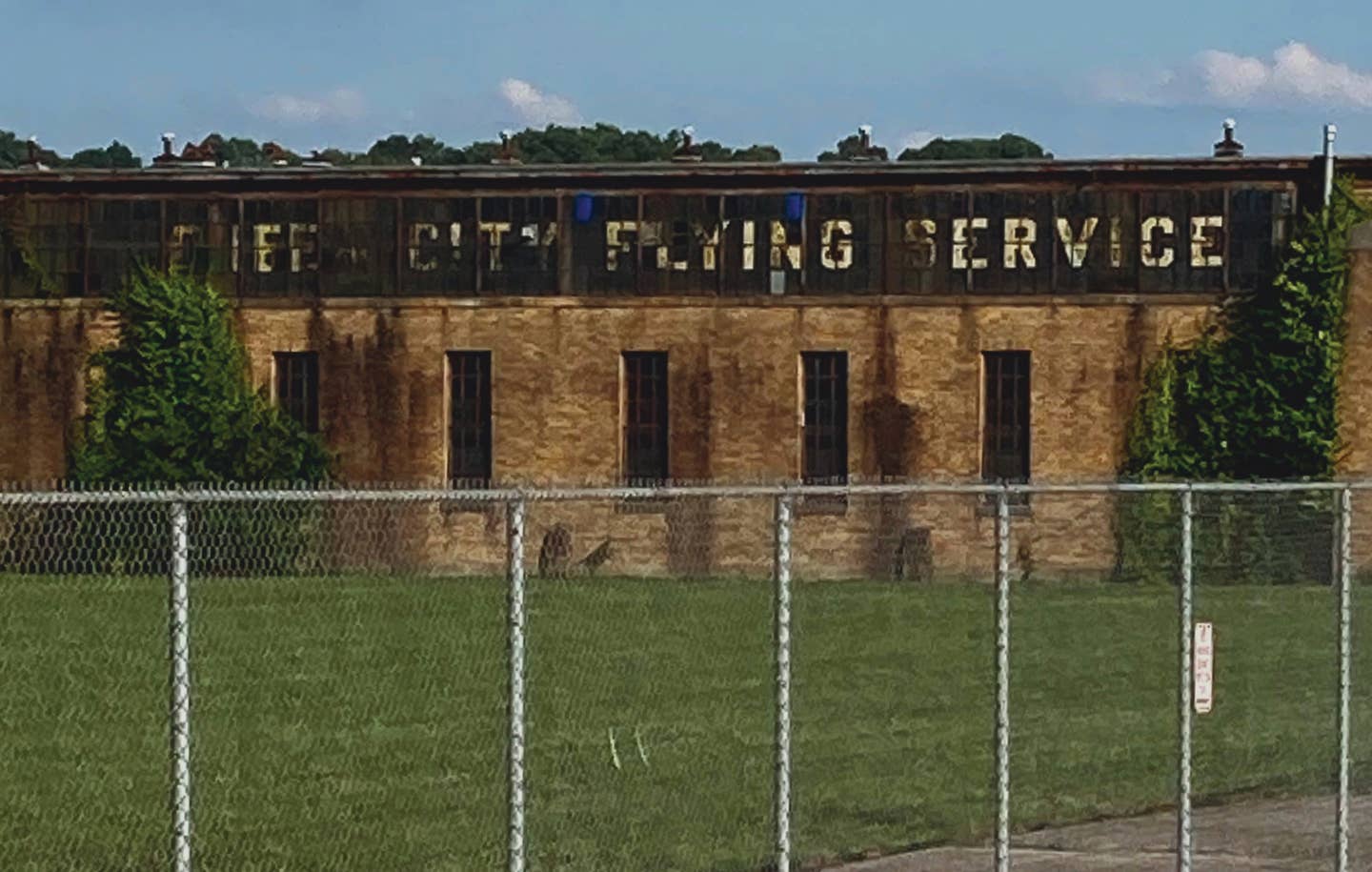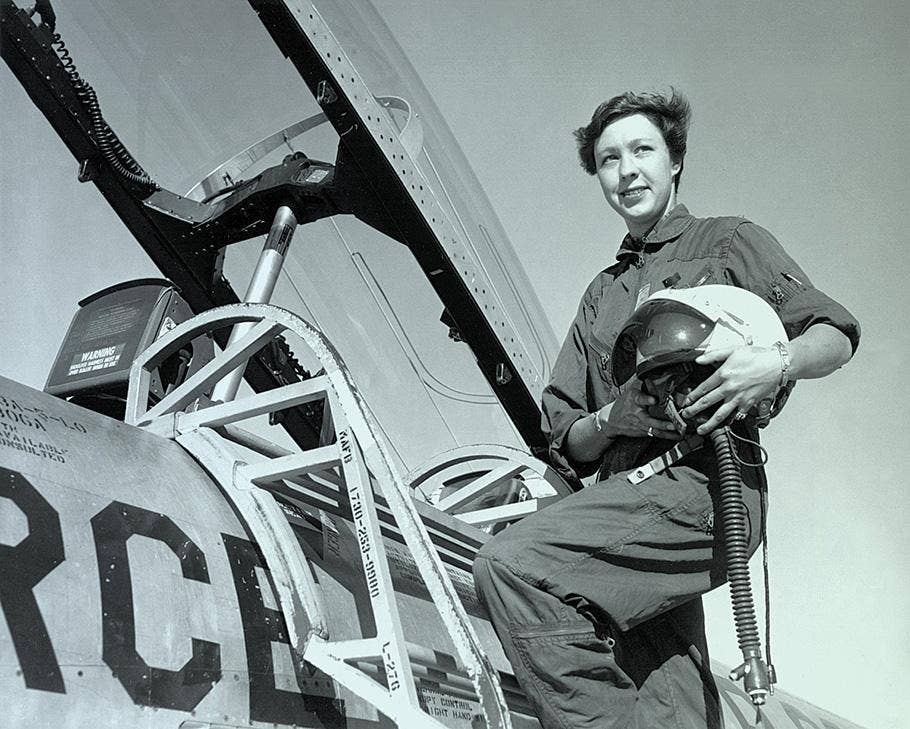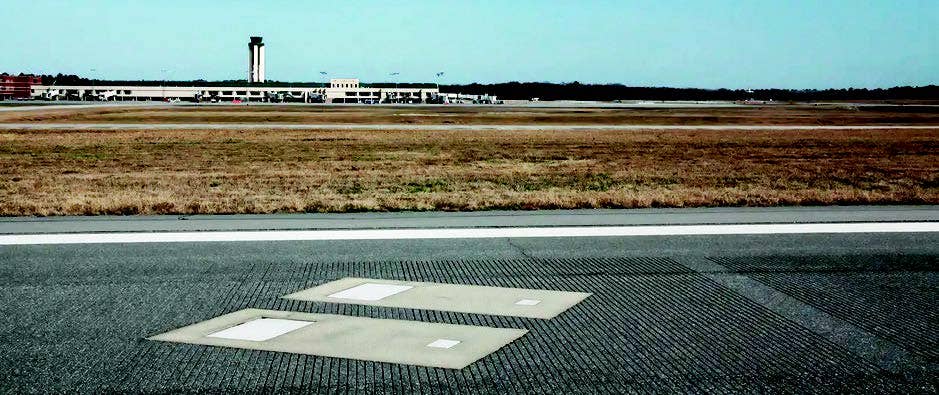Martha’s Return to IFR Skies
It’s time to go cloud flyin’ again after 56 years, thanks to the help of some wonderful people.

FLYING contributor Martha Lunken says It was a steep learning curve for her
to master the intricacies of Garmin equipment and
ForeFlight. [Courtesy: Martha Lunken]
It was a hot and sticky April afternoon when I finally took the instrument rating (airplane) practical test with FAA inspector Dale Ropp. All my dual had been at night with Roger Burdorf, who was a good pilot but had some unique ideas about getting maximum performance out of his students. This usually involved yelling and/or smacking me on the back of the head when I screwed up.
Early in training, I made a night instrument takeoff from Lunken Airport (now KLUK) in Ohio, using a runway adjacent to a hillside with traffic on a busy highway at the base and well-lit neighborhoods climbing the slope. I unearthed a hood that was extra wide and allowed me to cheat a little with a glimpse of terrain on the sides. What seemed like a great idea was a bad mistake and an excellent lesson in vertigo. As I began to climb, I was almost hypnotized—totally confused—by moving lights I could see under the left side of the hood. I’m pretty sure we would have flown into the hill if Roger hadn’t taken the controls...and, yes, smacked me on the head.
If you're not already a subscriber, what are you waiting for? Subscribe today to get the issue as soon as it is released in either Print or Digital formats.
Subscribe NowThe test presented some challenges—in night training I hadn’t experienced the turbulence of sunny, hot afternoons. Inspector Ropp and I weren’t using headsets and, unfortunately, he’d eaten something with lots of garlic the night before. On the plus side, it was pretty simple since I had one VOR receiver for approaches and holds. And, yes, I passed!
No, wait, that was the test in 1967.
In those days, the normal progression of certificates and ratings took you from private pilot to commercial, to flight instructor, and then you went on for an instrument rating. It was five years from the time I became a genuine private pilot in 1962 to accumulate the time and pass the writtens and flight tests for the commercial certificate and a flight instructor rating. And getting that CFI was critical because the only way I could eat regularly and earn enough to keep flying was to instruct. And, boy, did I instruct...about 6,000 hours total over the next 10 years.
First, I worked part time for Cincinnati Aircraft, a Cessna dealer. The Cessna 150s and 172s were great trainers but had the world’s worst radios—the Cessna 300 series. We reentered traffic patterns on lights nearly as often as we did communicating over the radio waves with the tower. When the Midwest winter was grounding the airplanes, owner Witham Smith demanded those of us with instrument ratings file IFR, climb above the overcast, give an hour of basic dual, make a VOR approach into Greater Cincinnati Airport (KCVG), and then fly VFR underneath the 13 miles back to Lunken. At best, an “hour” of dual was closer to two. I “declined,” got fired, instructed for Johnny Lane at Lebanon (I68), and then started my own flight school.
Well, fast-forward 56 years and here I am back at it again. During the year of enforced downtime after the “bridge” revocation, I crammed and passed the private and (wickedly brutal) instrument writtens. Then, on Christmas Eve 2021, I did the private practical in a Cessna 150. So, I assumed getting the instrument rating in my Cessna 180 would be a piece of cake. Wrong again.
- READ MORE: Martha Lunken Earns Her Wings (Again)
At risk of boring you with a lengthy tale of woe, it was another year before the airplane and I felt the sprinkle of holy water. I sat out a lengthy annual inspection in January and February and miserable weather during the Midwest’s February and March. But late in March 2022, I hooked up with Steve Reinhardt, a CFI who is consummately patient and intimately familiar with my Garmin GNS 430 (about which I knew little more than “direct-to”) and ForeFlight (which was a total mystery). Best of all, Steve doesn’t hit students on the head. Then my elderly DG failed, so I put 72B in the shop for installation of two flush-mounted Garmin G5s. Three weeks passed, and I was struggling to learn the equipment while precisely hand flying my “very light on the controls” 1956 Cessna 180. And the various intricate approaches and holds were at airports about 10 miles apart—it was a bitch!
Next, a guy ran into the tail of the 180 on the ground at Lebanon, and it would be close to a month until we got the vertical stabilizer and rudder back from Williams Airmotive in northern Indiana. They’re great people with an outstanding shop for control surfaces. At one point, a very special guy named Dean Mallory, who hangs out at Waynesville’s Red Stewart Airfield (40I), offered me the use of his Cessna 182. Talk about friends!
But the delay wasn’t only damage, avionics installations, and weather. It was a steep learning curve for me to master the intricacies of the Garmin equipment and ForeFlight. More than once, I nearly lost heart.
GPS technology wasn’t intuitive for me. Thermals on sunny days below 4,000 feet made for lots of turbulence, and the variety of approach procedures and holds mandated by the FAA at three or four airports within 10 miles of each other was difficult. I was scrambling to enter the information and push the right buttons while trying to hand fly the 180 precisely on altitudes and headings.
Yeah, I did it, and Steve recommended me one month short of my 81st birthday, and I flew a no-holds-barred, good practical test with Brian Trapp at John Lane Field (I68) in Lebanon, Ohio. Brian holds more designations than anyone in my experience and travels across the country—even to remote places like the Fiji islands—as an examiner, administering everything from medical check rides to re-exams and every conceivable airplane and lighter-than-air certificate or rating. Additionally, he owns and operates the Gentle Breeze Hot Air Balloon Co. with his talented and delightful pilot/partner, Laurie Givin. Brian knows his stuff, cutting no corners on the test.
Was so much time, effort, and expense worth it. Yes! Steve pounded the intricacies of the GPS equipment and procedures into my head, and I became more adept at precision flying in the 180. So many people kept me going—superb instructor Reinhardt, Mallory (“Hey, use my airplane.”), Flying Neutrons Club members at I68 (many of whom I’d certificated), IA mechanic Mark Day, and Givin, and Trapp, who flew in late the night before from Phoenix for the test.
As Henry Ford rightly said, “Whether you think you can, or you think you can’t—you’re right.”
This column first appeared in the October 2023/Issue 942 of FLYING’s print edition.

Subscribe to Our Newsletter
Get the latest FLYING stories delivered directly to your inbox



